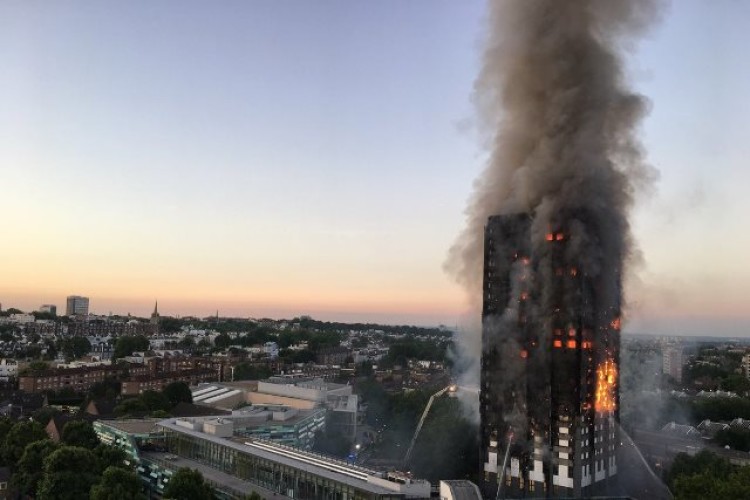Not only was the cladding chosen badly, the design and installation of windows and cavity barriers was also flawed, turning what had originally been a safe structure into a tinderbox.
The 210-page report produced by BRE Global for the Metropolitan Police’s criminal investigation into the fire has been seen by London’s Evening Standard newspaper, which carries a full report on the findings.
In summary, it says that windows, cavity barriers and the cladding system all failed to meet building regulations.
The fire started in a fridge-freezer in a flat on the fourth floor on 14th June 2017. Flames escaped through an open window, took hold in the cladding. All 24 storeys were rapidly consumed, killing 71 residents.
The first conclusion of the report is that had the building not been re-clad, the fire would not have gone beyond the first flat.
Grenfell Tower was built in 1974 and underwent an £8.6m refurbishment. This was completed only in May 2016. The refurbishment included recladding the building in panels of Arconic's Reynolux coated aluminium sheets with a Reynobond polyethylene (PE) core. Celotex supplied RS5000 insulation.
The refurbishment was carried out by Rydon Maintenance for Kensington & Chelsea Tenant Management Organisation and approved by Royal Borough of Kensington & Chelsea building control.
According to the Evening Standard, the BRE report says: “Grenfell Tower, as originally built, appears to have been designed on the premise of providing very high levels of passive fire protection.
.png)
“The original facade of Grenfell Tower, comprising exposed concrete and, given its age, likely timber or metal frame windows, would not have provided a medium for fire spread up the external surface. In BRE’s opinion … there would have been little opportunity for a fire in a flat of Grenfell Tower to spread to any neighbouring flats.”
The BRE identified five significant breaches of building regulations that appear directly implicated in the loss of life:
1. The cavity barriers, which in the event of fire are meant to expand and seal the gap between the concrete surface of the building and the cladding insulation, were of “insufficient size specification” to be effective. Some cavity barriers were installed upside down or back to front, further retarding their effectiveness. The chosen cavity barriers were designed to close a gap of 25mm but the actual gap was up to 50mm. This failure provided a route for fire to spread.
2. The window frames were 150mm narrower than the gap between the concrete surfaces of the columns. Spaces were filled by a rubberised membrane, rigid foam insulation and uPVC lightweight plastic panels incapable of providing 30 minutes fire resistance, providing fuel for, rather than a barrier to, the fire.
3. The insulation used was combustible and provided a medium for fire spread up, across and within sections of the facade.
4. The aluminium composite material used in the facade had a highly combustible polyethylene core.
5. Many flats had no door closers on their front doors so as residents fled, doors remained opened, further encouraging fire to spread.
Got a story? Email news@theconstructionindex.co.uk



